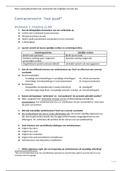Samenvatting
Summary Coasts 8 Marker Plans
- Vak
- Instelling
- Boek
This document includes bullet point plans for potential 8 mark questions for OCR A-level Paper 1. This includes landform formation questions as well as questions on the role of factors such as ocean currents on landscapes.
[Meer zien]













